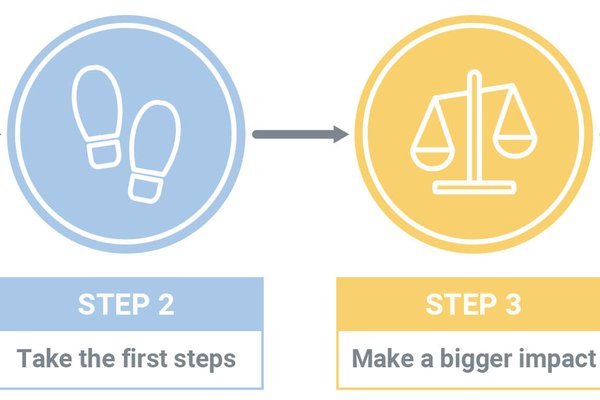The Lord God took the man and put him in the Garden of Eden to work it and take care of it.
Genesis 2:15As Christians, we are called to be stewards of God's creation. There are many ways to do this, from protecting biodiversity to making lifestyle changes. You can find more about on our Action for Hope pages.
One way we care for creation is through our work to reduce carbon emissions and reach Net Zero. But what does Net Zero mean? It means the amount of greenhouse as emissions added to the atmosphere is no more than the amount removed. This is reached by significantly reducing the emissions from our buildings & travel and removing any residual emissions, through purchasing renewable energy and offsetting.
In response to the climate change emergency, the Methodist Church set the aspirational target to reach Net Zero by 2030. We are aware that this can be a daunting task and so a set of practical steps and recommendations have been created with the aim of helping churches reduce their energy use and associated carbon emissions.
The guidance is divided up into four steps, which a church can work through at their own pace. Steps 3 and 4 may not be feasible in their entirety for every church, but there may be ideas you can use. As more and more churches work on reducing their energy use and emissions, it will cumulatively make a difference. Paired up with the four steps is the Net Zero Checklist for Churches, designed to help your church identify what you're already doing and what actions to prioritise next. There is also a Net Zero Checklist for Manses.
If you are planning a property project, you may wish to refer to the Property Development Pathways guidance.
As well as the four steps on getting your building down to net zero, you can find information on Fundraising for Net Zero Projects. As more guidance is developed, it will be added to this page, so check back regularly.
Case Study: Baildon Methodist Church
A managing trustee from Baildon Methodist Church in Bradford tells the story of how their church got down to net carbon zero.
-

Assess Your Building & Energy Usage
The first step is assess the building in order to understand its performance and energy usage.
Read more -

Take First Steps
Actions that nearly all churches can benefit from, even those churches that might only be used only on a Sunday.
Read more -

Make a Bigger Impact
Actions with a reasonably fast pay back for a church with medium energy usage that is used a few times a week.
Read more -

Down to Net Zero
Actions for more complex, projects, which only busy churches with high energy use are likely to consider.
Read more -

Fundraising for Net Zero Projects
When undertaking net zero projects, you are likely to need external funding.
Read more
This page is here to help you get started with this. -

Energy Audits
Energy audits help assess energy use in your church and identify ways to reduce it. Learn more here.
Read more